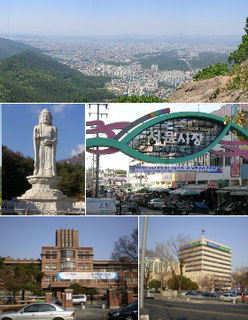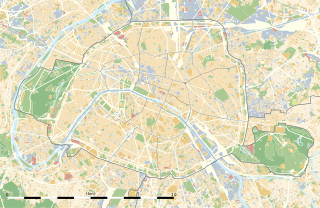
The Louvre, or the Louvre Museum, is the world's largest art museum and a historic monument in Paris, France. A central landmark of the city, it is located on the Right Bank of the Seine in the city's 1st arrondissement. Approximately 38,000 objects from prehistory to the 21st century are exhibited over an area of 72,735 square metres. In 2018, the Louvre was the world's most visited art museum, receiving 10.2 million visitors.
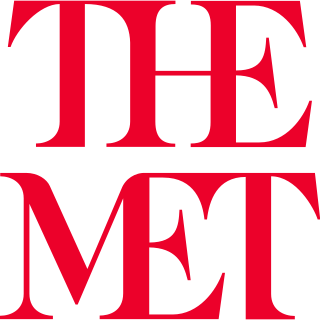
The Metropolitan Museum of Art of New York City, colloquially "the Met", is the largest art museum in the United States. With 6,953,927 visitors to its three locations in 2018, it was the third most visited art museum in the world. Its permanent collection contains over two million works, divided among seventeen curatorial departments. The main building, on the eastern edge of Central Park along Museum Mile in Manhattan's Upper East Side is by area one of the world's largest art galleries. A much smaller second location, The Cloisters at Fort Tryon Park in Upper Manhattan, contains an extensive collection of art, architecture, and artifacts from Medieval Europe. On March 18, 2016, the museum opened the Met Breuer museum at Madison Avenue on the Upper East Side; it extends the museum's modern and contemporary art program.

A museum is an institution that cares for (conserves) a collection of artifacts and other objects of artistic, cultural, historical, or scientific importance. Many public museums make these items available for public viewing through exhibits that may be permanent or temporary. The largest museums are located in major cities throughout the world, while thousands of local museums exist in smaller cities, towns and rural areas. Museums have varying aims, ranging from serving researchers and specialists to serving the general public. The goal of serving researchers is increasingly shifting to serving the general public.

The Smithsonian Institution, also known simply as the Smithsonian, is a group of museums and research centers administered by the Government of the United States. It was founded on August 10, 1846, "for the increase and diffusion of knowledge". The institution is named after its founding donor, British scientist James Smithson. It was originally organized as the "United States National Museum", but that name ceased to exist as an administrative entity in 1967.

The Ashmolean Museum of Art and Archaeology on Beaumont Street, Oxford, England, is the world's first university museum. Its first building was erected in 1678–83 to house the cabinet of curiosities that Elias Ashmole gave to the University of Oxford in 1677.

The Science Museum is a major museum on Exhibition Road in South Kensington, London. It was founded in 1857 and today is one of the city's major tourist attractions, attracting 3.3 million visitors annually.

Madame Tussauds is a wax museum in London; it has smaller museums in a number of other major cities. It was founded by wax sculptor Marie Tussaud. It used to be spelled as "Madame Tussaud's"; the apostrophe is no longer used. Madame Tussauds is a major tourist attraction in London, displaying the waxworks of famous and historical figures, as well as popular film and television characters from famous actors

The Los Angeles County Museum of Art (LACMA) is an art museum located on Wilshire Boulevard in the Miracle Mile vicinity of Los Angeles. LACMA is on Museum Row, adjacent to the La Brea Tar Pits.

The National September 11 Memorial & Museum is a memorial and museum in New York City commemorating the September 11, 2001 attacks, which killed 2,977 people, and the 1993 World Trade Center bombing, which killed six. The memorial is located at the World Trade Center site, the former location of the Twin Towers that were destroyed during the September 11 attacks. It is operated by a non-profit institution whose mission is to raise funds for, program, and operate the memorial and museum at the World Trade Center site.

The American Museum of Natural History, located on the Upper West Side of Manhattan, New York City, is the largest natural history museum in the world. Located in Theodore Roosevelt Park across the street from Central Park, the museum complex comprises 28 interconnected buildings housing 45 permanent exhibition halls, in addition to a planetarium and a library. The museum collections contain over 33 million specimens of plants, animals, fossils, minerals, rocks, meteorites, human remains, and human cultural artifacts, of which only a small fraction can be displayed at any given time, and occupies more than 2 million square feet (190,000 m2). The museum has a full-time scientific staff of 225, sponsors over 120 special field expeditions each year, and averages about five million visits annually.

The National Museum of Natural History is a natural history museum administered by the Smithsonian Institution, located on the National Mall in Washington, D.C., United States. It has free admission and is open 364 days a year. In 2016, with 7.1 million visitors, it was the eleventh most visited museum in the world and the most visited natural history museum in the world. Opened in 1910, the museum on the National Mall was one of the first Smithsonian buildings constructed exclusively to hold the national collections and research facilities. The main building has an overall area of 1,500,000 square feet (140,000 m2) with 325,000 square feet (30,200 m2) of exhibition and public space and houses over 1,000 employees.
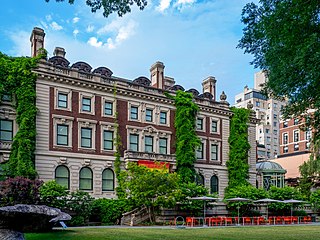
Cooper Hewitt, Smithsonian Design Museum is a design museum located in the Upper East Side's Museum Mile in Manhattan, New York City. It is one of nineteen museums that fall under the wing of the Smithsonian Institution and is one of three Smithsonian facilities located in New York City, the other two being the George Gustav Heye Center in Bowling Green and the Archives of American Art New York Research Center in the Flatiron District. It is the only museum in the United States devoted to historical and contemporary design. Its collections and exhibitions explore approximately 240 years of design aesthetic and creativity.
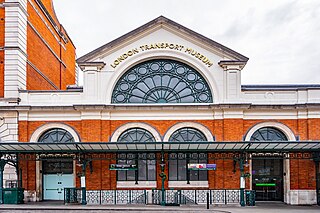
The London Transport Museum or LT Museum, based in Covent Garden, London, seeks to conserve and explain the transport heritage of Britain's capital city. The majority of the museum's exhibits originated in the collection of London Transport, but, since the creation of Transport for London (TfL) in 2000, the remit of the museum has expanded to cover all aspects of transportation in the city.
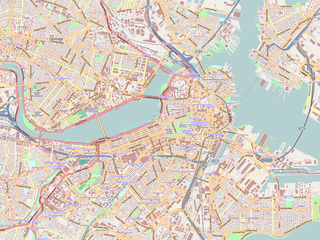
The Museum of Fine Arts in Boston, Massachusetts, is the fifth largest museum in the United States. It contains more than 450,000 works of art, making it one of the most comprehensive collections in the Americas. With more than 1.2 million visitors a year, it is the 52nd most visited art museum in the world as of 2019.

The Museum of New Zealand Te Papa Tongarewa is New Zealand's national museum, located in Wellington. Known as Te Papa, or 'Our Place', it opened in 1998 after the merging of the National Museum and the National Art Gallery. More than 1.5 million people visit every year.
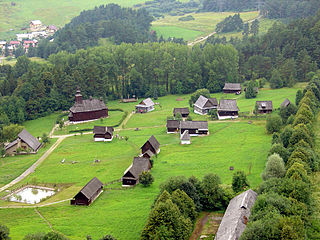
An open-air museum is a museum that exhibits collections of buildings and artifacts out-of-doors. It is also frequently known as a museum of buildings or a folk museum.
The National Gandhi Museum or Gandhi Memorial Museum is a museum located in New Delhi, India showcasing the life and principles of Mahatma Gandhi. The museum first opened in Mumbai, shortly after Gandhi was assassinated in 1948. The museum relocated several times before moving to Raj Ghat, New Delhi in 1961.

An exhibition, in the most general sense, is an organised presentation and display of a selection of items. In practice, exhibitions usually occur within a cultural or educational setting such as a museum, art gallery, park, library, exhibition hall, or World's fairs. Exhibitions can include many things such as art in both major museums and smaller galleries, interpretive exhibitions, natural history museums and history museums, and also varieties such as more commercially focused exhibitions and trade fairs.

The KDHP Tea Museum is an industry and history museum situated in Munnar, a town in the Idukki district of Kerala in South India. Tata Tea Museum is its official name, but it's also known as Nalluthanni Estate where it is located, or Kannan Devan Hills Plantation (KDHP) Tea Museum.

